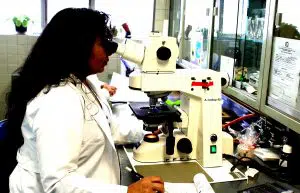You know I’m interested in justice because of my background as a lawyer. So of course, I write mystery/thriller/suspense. What else?
DNA comes up all the time in my research and in my writing. I use it frequently in my Hunt for Jack Reacher Series books like Jack and Joe. And in my books about the forensic genealogist Heir Hunter, Michael Flint, who works to track down missing heirs — often missing for good reason.
DNA is so jam packed with data that it’s no surprise DNA has been the key to solving multiple mysteries in real life, too. DNA can be used to convict perpetrators and identify remains, though it’s not infallible.
DNA is only as reliable as the manner in which it is collected, stored, and analyzed.
Since DNA is such a powerful tool in the courts, it is crucial that the process of collecting and analyzing is done by well-trained experts. Any errors made in this process can result in prosecution of innocents, allowing the real perpetrators to remain free. Unfortunately many things can go wrong before and after DNA samples have reached a lab.
Size and quality of the DNA sample
An ideal DNA sample has a large quantity of a suspect’s genes. The analysis process becomes tricky when working with a small sample size or if there are numerous DNA types mixed together. This can occur when samples are taken from surfaces such as doorknobs where a variety of genetic materials exist. Even when DNA is found at a crime scene, it may have been deposited before any crime occurred.
Samples can be contaminated and the results skewed if proper methods aren’t used to collect and transport DNA. In one well-known case in Germany, cotton balls used to collect DNA were contaminated by an employee at the cotton factory. The employee’s DNA ended up contaminating samples from 40 crime scenes, leading investigators to believe that there was an infamous serial killer on the loose! (Sounds like a good plot device for one of my books, doesn’t it?)
Improper lab procedures
Although most labs have high standards, labs are busy places where mix-ups can happen. DNA samples can be mislabeled or lost altogether. Each time a DNA sample is handled there is potential for error.
Labs process DNA samples in many different ways. The results can also be interpreted in a variety of ways that directly influence the conclusions investigators and juries draw from the evidence. Although rare, coincidental matches may also occur, resulting in a false positive.
While the consequences of errors can be life altering for those who are wrongfully convicted, DNA can also be used to exonerate innocent people who have been wrongly accused and convicted.
The importance of DNA can be overwhelming, or overemphasized. DNA is often only one bit of evidence in the puzzle of a much larger picture. Which leaves plenty of wiggle room for a crime writer like me.







Comments are closed.